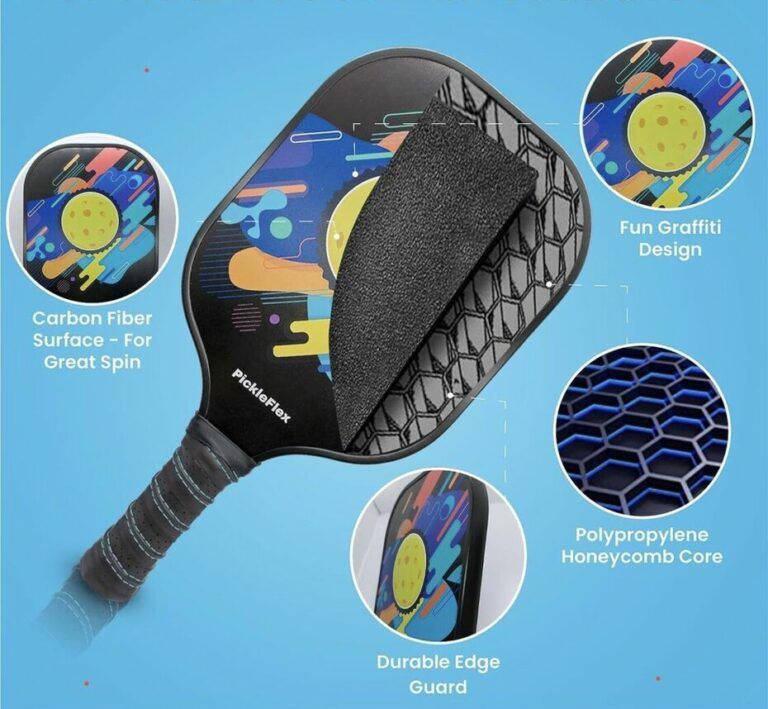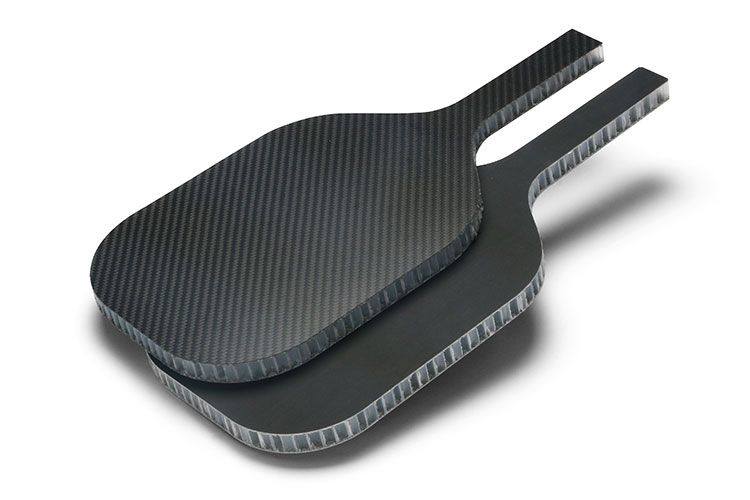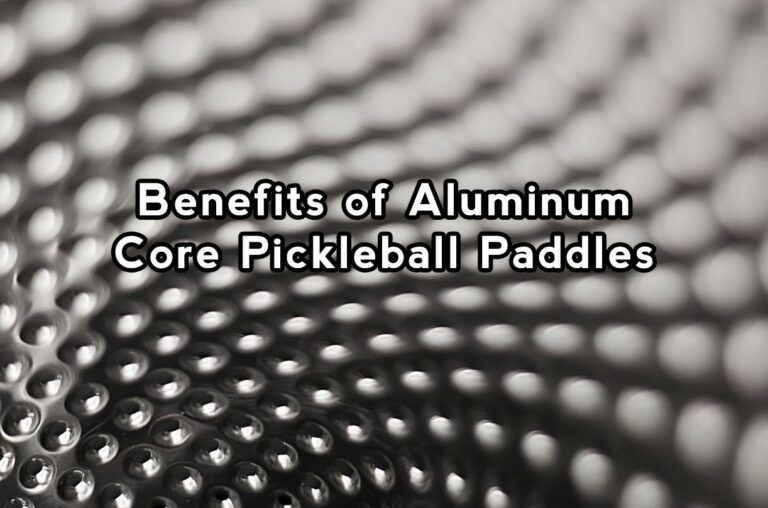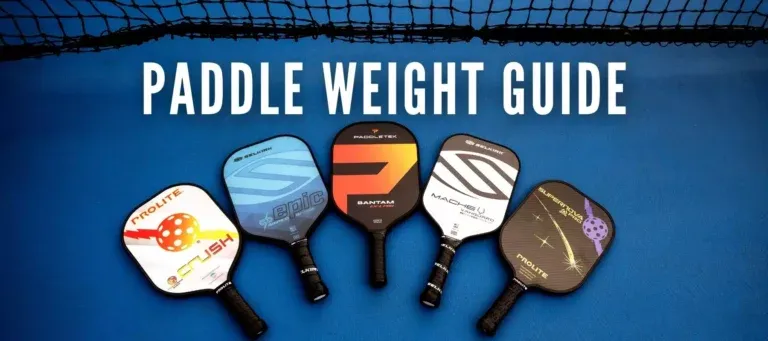Types of Pickleball Paddle Cores
Polymer cores
When it comes to the most popular choice among players, polymer cores (often made from polypropylene) reign supreme. Known for their balance of power and control, these cores have transformed the way players approach the game. With their honeycomb structure, polymer cores offer a lightweight paddle that doesn't compromise on durability or performance. Imagine a feather delicately floating on a gentle breeze this is how comfortable and responsive polymer paddles can feel in skilled hands.
The characteristics of polymer cores lend themselves to a quiet gameplay experience, making them particularly appealing for those who enjoy control over aggressive shots. Players can achieve a delicate touch, allowing for exquisite spin and accuracy. For example, the Selkirk Amped X5 and Engage paddles are standout models that exemplify the advantages of polymer core designs.
Among the various factors that contribute to a polymer paddle’s performance, core density plays a pivotal role. The cell size influences power, control, and durability. A denser core often results in increased control, while a larger cell size can enhance power. Players should consider their playing style and preferences when choosing a paddle to ensure their decision harmonizes with their approach on the court.

Nomex cores
Stepping into the ring with unmatched strength and durability are Nomex cores, specifically engineered for players who crave a powerful game. With a reputation for delivering explosive shots, Nomex has become the go-to choice for aggressive players. Their honeycomb structure, originally conceived for aerospace applications, bestows a unique hardness that translates into remarkable responsiveness during gameplay. Picture unleashing a fierce thunderstorm with each swing this is the sensation a player experiences with a Nomex core.
However, the power that Nomex cores offer comes with trade-offs. While these paddles ignite intensity on the court, their louder sound might not be suitable for more control-oriented players looking for quiet finesse. The Onix Z5 and Diadem Warrior are notable examples of paddles equipped with Nomex cores, designed for players who thrive on the challenge of delivering the most impactful shots.
It's imperative for players to evaluate their needs and preferences carefully; while Nomex provides the horsepower they desire, it may compromise touch and control typically associated with polymer cores. Finding that perfect balance is an ongoing journey for pickleball enthusiasts.

Aluminum cores
For newcomers stepping into the pickleball arena, aluminum cores offer an inviting introduction. These paddles bring a lightweight construction that promotes ease of use, making them especially suitable for junior players or those just starting their pickleball journey. Imagine wielding a paddle that feels nearly weightless this is the kind of freedom aluminum cores provide, allowing aspiring players to develop their skills without the hindrance of cumbersome equipment.
While aluminum cores are generally more affordable, they do come with certain limitations. Compared to their counterparts, polymer and Nomex, aluminum options usually lack the same level of power. Nevertheless, their stability allows players to gain better control over the ball, ensuring they can build confidence early in their development.
Several models feature aluminum cores, allowing beginners to experiment without overwhelming their budgets. These paddles possess a solid feel while striking the ball, instilling a sense of accomplishment even in early gameplay. As players grow more comfortable and refine their skills, they can reassess their equipment with an eye toward paddles that offer more power and response.

Hybrid core constructions: Blending the best of both worlds
With a surge in innovation, the world of pickleball paddles has seen the emergence of hybrid core constructions. By combining different core materials like polymer and Nomex manufacturers create paddles that deliver an ingenious balance of power and control. These innovative designs address the unique needs of diverse playing styles, allowing players to fine-tune their equipment for optimal performance on the court. Think of hybrid paddles as the perfect recipe, mixing ingredients for a delightful culinary experience.
One notable hybrid paddle is the Diadem Warrior, which successfully merges characteristics of different core materials to create a remarkable player experience. Players can enjoy the benefits of power typically associated with Nomex while not sacrificing the touch and control offered by polymer designs. This fusion allows players to navigate through various gameplay challenges with confidence and finesse.
Reflecting on the different playing styles, hybrid constructions cater to players who might feel constrained by the limitations of single-material paddles. For those seeking to enhance all areas of their game, these paddles can offer the flexibility needed to evolve into a more versatile player.
Carbon fiber cores: Gearbox's innovation
In a world where durability and strength become paramount, carbon fiber cores emerge as a revolutionary choice pioneered by Gearbox. Currently, Gearbox stands alone as the manufacturer utilizing full carbon fiber for paddle cores a testament to their commitment to innovation within the sport. The unique construction of carbon fiber results in an incredibly durable paddle that withstands the rigors of demanding play. Picture a superhero, resilient and powerful; that's what players can expect when they wield a Gearbox paddle.
Player feedback indicates that Gearbox paddles not only endure game after game but also exhibit impressive performance characteristics, striking a balance between power and touch. The strength of carbon fiber provides players with an exceptional feel, allowing for nuanced shots and increased control over gameplay.
As more players explore the experiences offered by carbon fiber cores, it’s exciting to witness how innovation shapes the future of pickleball paddles. As they grow in popularity, the revelations from this pioneering technology may pave the way for a new era in paddle design.
Matching your core to your playing style
Selecting the appropriate paddle core material is not a mere question of preference; it directly correlates to a player's individual technique and style. Understanding the variations in core materials equips players with the necessary knowledge to enhance their gameplay experience. Whether you are a control-oriented player seeking finesse or a power-driven player needing explosive shots, each core material caters to distinct styles.

For those who prioritize control, polymer cores can provide a responsive, touch-oriented feel. The versatility of these paddles allows players to experiment with spin and placement, essential attributes in any competitive environment. Conversely, power-oriented players may gravitate towards Nomex, where the focus will be on delivering the fastest possible shots. The combination of these elements facilitates the creation of distinct player identities on the court.
See more: Control vs Power Pickleball Paddles - A Comprehensive Comparison
Encouraging players to engage in hands-on exploration, trying out various paddles can yield insights invaluable in selection. Each player’s playing style is unique, and pinpointing the right fit empowers players to elevate their game as they instinctively respond to the nuances of their paddle choices.
Weight and balance: Finding your perfect feel
Delving into the intricate dance between weight and balance, players must consider how paddle core materials influence these aspects. The right combination can make the difference between a confident, controlled shot and a mishandled return. It's vital to understand the implications of paddle weight on gameplay, ranging from head-heavy to head-light designs.
Head-heavy paddles typically provide greater power, encouraging players to generate more force in their swings. This can be advantageous for seasoned players seeking to dominate on the court. In contrast, head-light paddles offer enhanced maneuverability and control, ideal for those focused on precision and strategic placement. Depending on skill level, players can explore general weight ranges suitable for different approaches.
Ultimately, discovering a paddle that feels comfortable and responsive is key. Players must pay attention to how a paddle balances in their hand and listen to their instincts during gameplay this connection is what brings out the best in each athlete.

Durability and longevity: Making your paddle last
A paddle's durability is as critical as its performance characteristics, influencing how long players can rely on their equipment. The composition of the core, including factors like cell size and impact resistance, plays a significant role in determining how well a paddle withstands the test of time. Simply put, a durable paddle allows players to focus on their game rather than worrying about the longevity of their equipment.
To prolong the life of any paddle, consider proactive maintenance strategies. Keeping paddles clean with a soft cloth, storing them properly in protective cases, and inspecting them regularly for signs of damage can go a long way toward ensuring durability.
Players should be aware of potential core damage signs like cracking or a shift in performance which may signal the need for a replacement. Riding the line between durability and performance can often be the difference between frustration and success on the pickleball court.
See more: What Is a Delaminated Pickleball Paddle & Why it Matters
Beyond the basics: Advanced core technologies and the future of pickleball paddles
The world of pickleball paddles is in a constant state of evolution, thanks to a flow of advanced core technologies and new manufacturing techniques. As manufacturers strive for innovation, they are exploring new polymer blends and tackling opportunities for customization that enhance paddle performance. Selkirk and Gearbox are key players in this space, pushing the boundaries of what's possible in paddle design.
As trends shift and the sport evolves, players can expect to see upcoming advancements that allow for greater customization. Fabrication techniques may soon open doors for personalized paddles specifically designed to meet the unique needs of each player. Additionally, thorough research into the sound properties of paddles could redefine perceptions of gameplay, taking us beyond traditional metrics of performance.
In conclusion, the exploration of pickleball paddle cores, their materials, and constructions reveals a world filled with possibilities for enhancing your game. As technology continues to progress, the future holds exciting prospects for customization, power, control, and ultimately, an enriched penetration of the sport into broader athletic contexts. Understanding these core types equips players with vital knowledge, allowing their performance and experiences on the court to soar to new heights.










